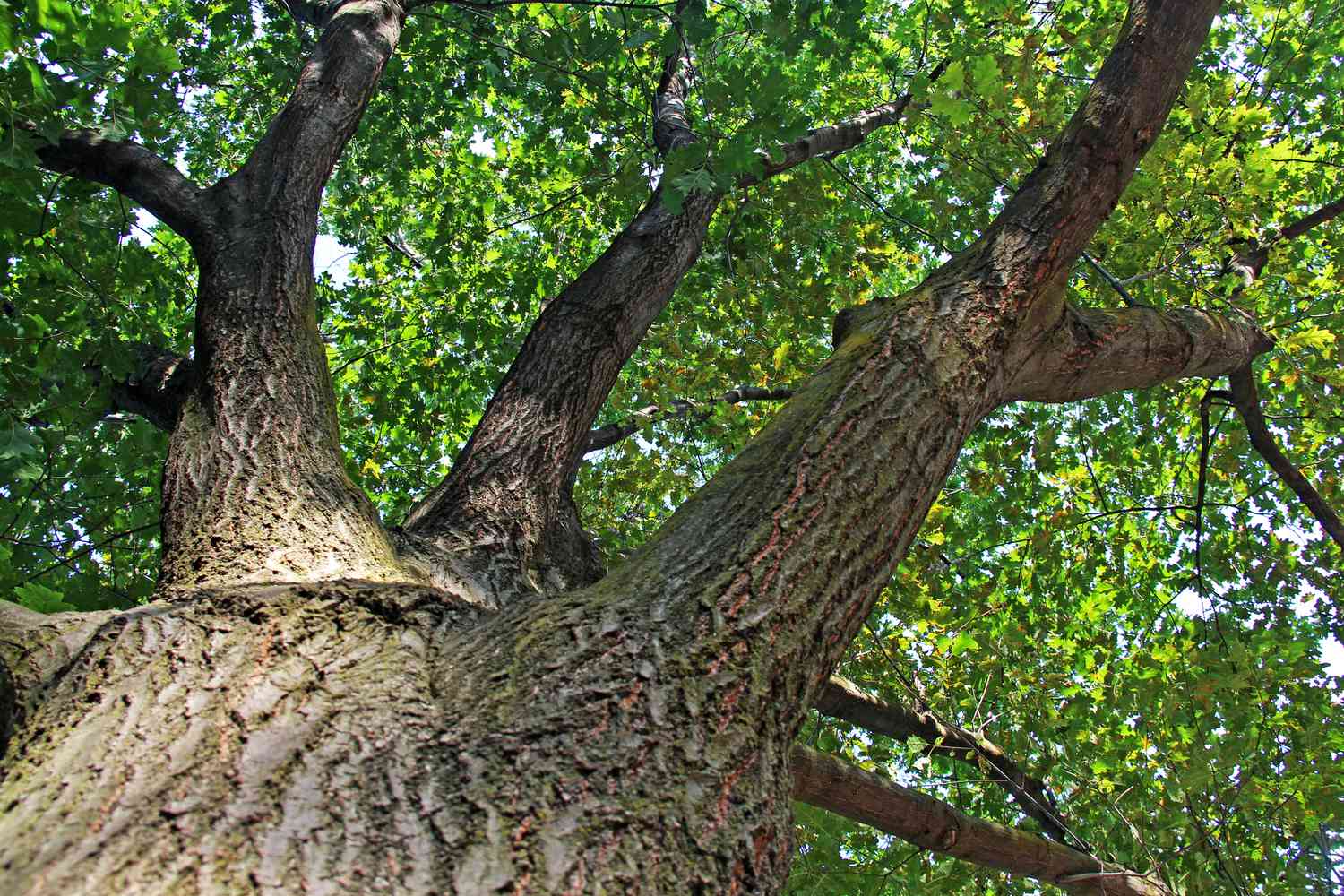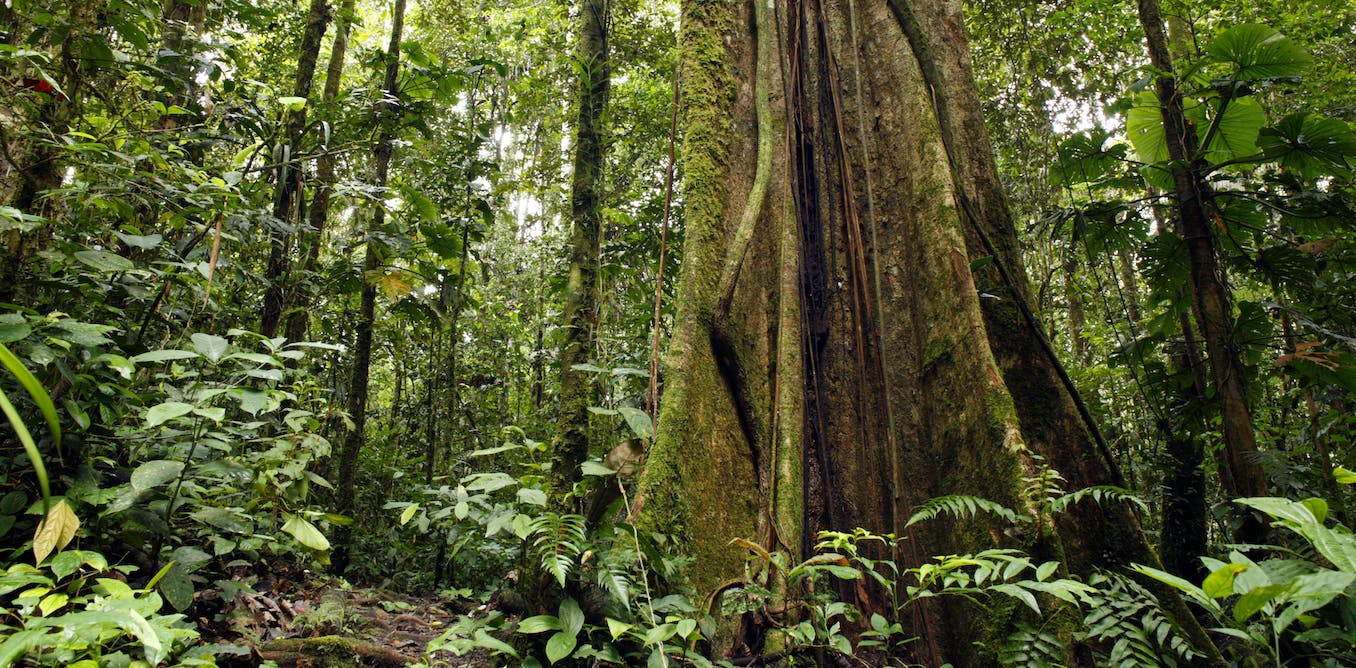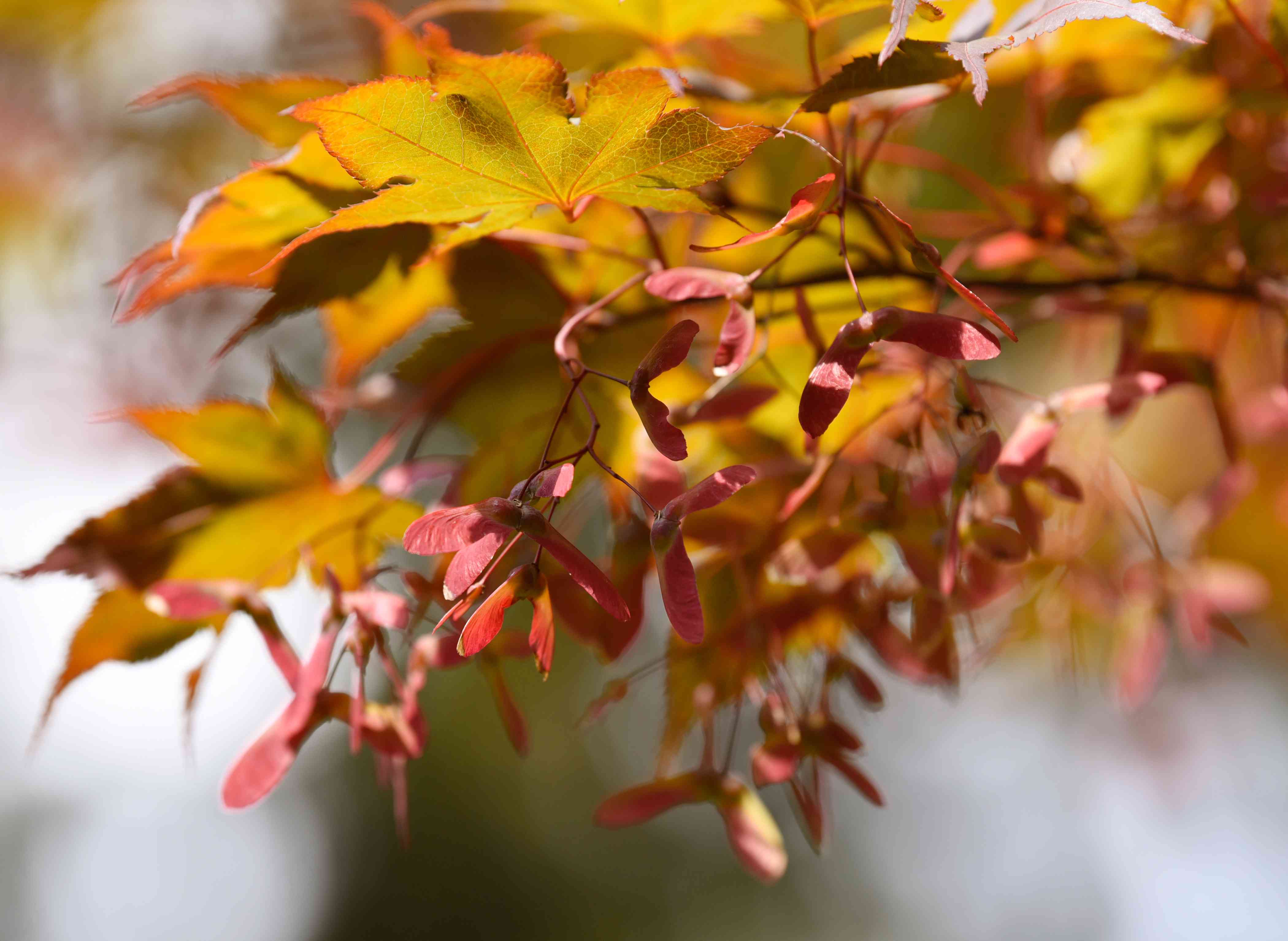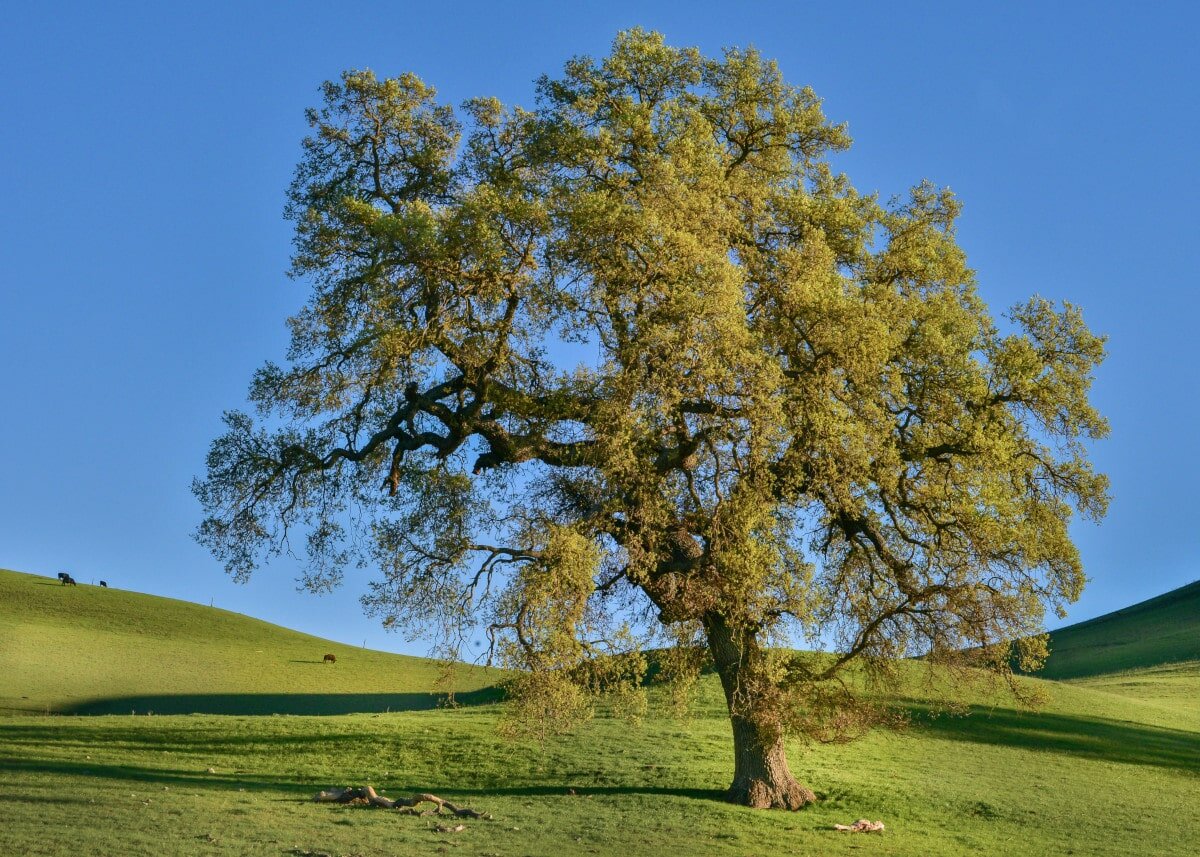Home>Gardening News and Trends>Latest News>Hardwoods Come From What Kind Of Trees?


Latest News
Hardwoods Come From What Kind Of Trees?
Modified: January 22, 2024
Stay updated with the latest news on hardwoods and discover the types of trees they come from. Explore the world of hardwoods and enhance your knowledge today.
(Many of the links in this article redirect to a specific reviewed product. Your purchase of these products through affiliate links helps to generate commission for Chicagolandgardening.com, at no extra cost. Learn more)
Table of Contents
Introduction
Welcome to the fascinating world of hardwood trees! Have you ever wondered where the beautiful and sturdy wood used in furniture, flooring, and construction comes from? Well, look no further, because in this article, we’ll delve into the realm of hardwood trees and unravel the secrets behind their origin and utilization.
Hardwoods and softwoods are the two main categories of trees that provide timber for various purposes. However, it’s important to note that the terms “hardwood” and “softwood” can be misleading, as they don’t actually refer to the hardness or softness of the wood. Rather, they are used to categorize different types of trees based on their seed structure.
Hardwood trees are known for their complex and enclosed seeds, while softwood trees have simpler and open-seeded cones. Hardwoods are typically sourced from broad-leaved deciduous trees, such as oak, maple, mahogany, and walnut, while softwoods are obtained from cone-bearing evergreen trees, such as pine and spruce.
The variety and abundance of hardwood trees around the world are truly remarkable. From the majestic oak trees of North America to the exotic teak trees of Southeast Asia, each species offers unique characteristics and features that make them highly sought-after in several industries.
In the following sections, we’ll explore different types of hardwood trees, discuss their distinctive features, and highlight their various uses. We’ll also touch upon the sustainability of hardwood trees and the importance of responsible forestry practices.
So, whether you’re a nature enthusiast, a homeowner looking to renovate, or a woodworking aficionado, get ready to immerse yourself in the captivating realm of hardwood trees. It’s time to discover the true beauty and versatility that these extraordinary trees possess.
Hardwoods vs Softwoods
Before we delve deeper into the world of hardwood trees, let’s first understand the distinction between hardwoods and softwoods. As mentioned earlier, the terms “hardwood” and “softwood” can be misleading, as they don’t actually refer to the hardness or softness of the wood. Instead, they are based on the seed structure of the trees.
Hardwoods come from broad-leaved deciduous trees, which shed their leaves annually. These trees typically have complex and enclosed seeds. Examples of hardwood trees include oak, maple, mahogany, walnut, cherry, and ash. The wood derived from hardwood trees is generally denser, more durable, and has a higher resistance to wear and tear.
On the other hand, softwoods are obtained from cone-bearing evergreen trees, which retain their leaves throughout the year. These trees have simpler and open-seeded cones. Some common softwood species include pine, cedar, spruce, and fir. Softwood is generally less dense and more flexible than hardwood, making it easier to work with in certain applications.
Hardwoods and softwoods have unique characteristics that make them suitable for different purposes. Hardwood is often favored for furniture, cabinetry, flooring, and decorative items due to its durability and aesthetic appeal. Softwood, on the other hand, is commonly used for construction, outdoor decking, and framing, thanks to its versatility and relatively lower cost.
It’s worth noting that there are exceptions to the generalizations about hardness and softness. For example, balsa wood, which is one of the lightest and softest woods available, is classified as a hardwood. Conversely, yew wood, despite being relatively heavy, is considered a softwood.
Understanding the distinction between hardwoods and softwoods is essential for anyone working with wood or seeking to purchase wood products. By knowing the properties and characteristics of each type, you can make informed decisions based on your specific needs and preferences.
Now that we have a basic understanding of the difference between hardwoods and softwoods, let’s explore the fascinating world of hardwood trees and the diverse species that fall under this category.
Different Types of Hardwood Trees
Hardwood trees encompass a vast array of species, each with its own unique characteristics and attributes. Let’s explore some of the most well-known and widely used hardwood trees:
- Oak: Oak is arguably one of the most popular and widely recognized hardwood species. It comes in two primary types: red oak and white oak. Oak wood is known for its strength, durability, and beautiful grain patterns, making it ideal for furniture, cabinets, flooring, and architectural elements.
- Maple: Maple is another highly esteemed hardwood known for its toughness and attractive appearance. It is often used in furniture, flooring, cabinetry, and musical instruments. The light-colored wood showcases a remarkable range of grain patterns, including bird’s eye, curly, and tiger maple.
- Mahogany: Mahogany is renowned for its rich, reddish-brown color and exceptional durability. It has been a favored choice for fine furniture and woodworking projects for centuries. Mahogany wood is also resistant to insects and decay, making it a popular choice for outdoor applications like boat building and decking.
- Walnut: Walnut wood is prized for its dark brown color, rich grain, and exceptional strength. It is commonly used for high-end furniture, cabinetry, flooring, and decorative items. Walnut’s natural beauty and ability to take on a smooth, polished finish make it a top choice for many craftsmen.
- Cherry: Cherry wood is known for its warm reddish-brown hue and fine, straight grain. It has a smooth texture and is often used in high-quality furniture, cabinets, and interior millwork. Over time, cherry wood develops a beautiful patina, further enhancing its visual appeal.
- Ash: Ash wood is prized for its strength, flexibility, and light color. It is often used in furniture, cabinetry, millwork, and sports equipment like baseball bats and hockey sticks. Ash wood has a distinct grain pattern and can be easily stained to achieve different shades.
These are just a few examples of the many hardwood trees found around the world. Each hardwood species offers unique characteristics, colors, and grain patterns, giving woodworkers and artisans a wide range of options to choose from for their projects.
Now that we have explored some of the common hardwood trees, let’s delve into the key characteristics and properties that make hardwoods so desirable for various applications.
Common Hardwood Species
There are numerous hardwood species found across the globe, each with its own unique characteristics and applications. Let’s take a closer look at some of the most commonly used hardwood species:
- Oak: Oak is renowned for its strength, durability, and distinctive grain patterns. It is commonly used in furniture making, flooring, architectural elements, and even wine barrels. Red oak and white oak are the two main types, with red oak having a more pronounced grain and white oak having a smoother appearance.
- Maple: Maple wood is known for its light color and fine, even grain. It is highly versatile and commonly used in furniture, cabinetry, flooring, and musical instruments. The hard and dense nature of maple makes it ideal for items that require durability and stability.
- Mahogany: Mahogany is a prized hardwood known for its reddish-brown color, rich grain, and exceptional durability. It is often used in high-end furniture, cabinetry, and musical instruments. Mahogany is highly sought after for its natural beauty and timeless elegance.
- Walnut: Walnut wood is cherished for its deep, dark brown color and exquisite grain patterns. It is commonly used in fine furniture, cabinetry, flooring, and gunstocks. Walnut is known for its strength and workability, and it adds a touch of sophistication to any project.
- Cherry: Cherry wood is celebrated for its warm reddish-brown color that becomes richer and darker over time. It has a fine texture and a straight grain pattern, making it suitable for furniture, cabinetry, and decorative elements. Cherry wood is often chosen for its elegant and classic appearance.
- Ash: Ash wood is known for its strength, hardness, and light color. It is commonly used in furniture making, flooring, millwork, and sports equipment. Ash wood is also known for its excellent shock resistance, making it a popular choice for tool handles and sports gear.
These popular hardwood species are just a glimpse into the wide variety of options available. Each has its own unique properties that make it suitable for different applications. Factors such as density, hardness, grain pattern, and color variation contribute to the appeal and versatility of these hardwoods.
It’s important to note that sustainability plays a crucial role in the use of hardwood species. Responsible forestry practices and proper sourcing help ensure the long-term viability of these trees and the ecosystems they support. By choosing sustainably harvested hardwoods, we can enjoy the beauty and benefits of these species while preserving them for future generations.
Now that we have explored some common hardwood species, let’s delve into the characteristics that make hardwoods so desirable for a wide range of applications.
Characteristics of Hardwoods
Hardwoods are prized for their unique and desirable characteristics, which set them apart from other types of wood. Understanding these characteristics can help us appreciate why hardwoods are highly valued in various industries. Let’s explore some of the key characteristics of hardwoods:
- Durability: Hardwoods are known for their strength and durability. They have a dense cellular structure that makes them resistant to wear, impact, and decay. This durability ensures that hardwood products, such as furniture and flooring, can withstand the test of time and continue to look beautiful for years.
- Density: Hardwoods are generally denser than softwoods. This density gives them a solid and substantial feel, making them suitable for items that require structural integrity and stability. The density of hardwoods also contributes to their enhanced resistance to moisture and rot, making them ideal for outdoor applications.
- Beauty of Grain: Hardwoods often feature beautiful and distinct grain patterns, enhancing their aesthetic appeal. The unique grain patterns can vary from straight and consistent to wavy or curly, adding character and visual interest to the wood. This natural beauty of hardwood grain is often showcased in furniture, cabinetry, and decorative elements.
- Color Variation: Hardwoods exhibit a wide range of colors, from light shades like maple to deep tones like mahogany and walnut. This variability allows for creativity and customization in woodworking projects. The rich and warm colors of hardwoods can create a sense of elegance and sophistication in any space.
- Workability: Hardwoods are often praised for their workability. They can be cut, shaped, and joined with relative ease, making them suitable for intricate designs and fine craftsmanship. The ability of hardwoods to hold intricate details and maintain their structural integrity makes them a favorite among woodworkers.
- Finishing: Hardwoods respond exceptionally well to various finishes, including stains, paints, and clear coats. The natural beauty of the wood is enhanced through the finishing process, bringing out the depth and richness of the grain. Hardwood finishes can range from a natural, clear sheen to a glossy or matte appearance, based on personal preference.
These characteristics make hardwoods highly desirable for a wide range of applications, including furniture making, flooring, cabinetry, and artistic creations. The strength, durability, and natural beauty of hardwoods ensure that they will continue to be a preferred choice for generations to come.
Now that we have examined the characteristics of hardwoods, let’s explore the diverse uses of hardwoods and their contribution to sustainability.
Uses of Hardwoods
Hardwoods are highly versatile and find applications in a wide range of industries. The unique characteristics of hardwoods make them valuable materials for various purposes. Let’s explore some of the common uses of hardwoods:
- Furniture: Hardwoods are widely used in furniture making due to their durability, beauty, and ability to hold intricate designs. Dining tables, chairs, beds, cabinets, and bookshelves often feature hardwood construction, providing long-lasting and visually appealing pieces for homes and businesses.
- Flooring: Hardwood flooring adds warmth and elegance to any space. It is known for its durability and longevity, with hardwood floors often lasting for generations. The natural beauty and timeless appeal of hardwood flooring make it a popular choice for residential and commercial settings.
- Cabinetry: Kitchens, bathrooms, and storage spaces often feature hardwood cabinetry. Hardwoods provide strength and durability while offering a wide range of aesthetic options. From sleek and modern designs to traditional and intricate styles, hardwood cabinetry enhances functionality and adds a touch of sophistication to any space.
- Millwork and Trim: Hardwoods are frequently used for millwork and trim details, such as baseboards, crown moldings, door frames, and window casings. Their density and fine grain make them ideal for precision cutting, enabling the creation of intricate and decorative elements that enhance the overall architectural design of a building.
- Interior Design: Hardwoods are often used in the creation of decorative items, such as wall panels, handrails, staircases, and mantels. These elements add elegance and sophistication to interior spaces, creating a warm and inviting atmosphere.
- Musical Instruments: Hardwoods play a significant role in the construction of musical instruments. Whether it’s guitars, violins, pianos, or drums, hardwoods provide the structural integrity, resonance, and tonal qualities needed for exceptional sound production.
- Artistic Creations: Hardwoods serve as a canvas for creativity in woodworking art. Sculptures, carvings, and intricate woodwork showcase the unique grain, color, and texture of hardwoods. From delicate ornaments to large-scale installations, hardwoods offer endless possibilities for artistic expression.
These are just a few examples of the many uses of hardwoods. The versatility of hardwoods allows them to be applied in various industries and artistic endeavors. With their durability, natural beauty, and ability to hold fine details, hardwoods play a pivotal role in creating functional and aesthetically pleasing products.
Although hardwoods have a wide range of applications, it is also important to consider the sustainability of their usage. Let’s explore the sustainability aspects of hardwood trees and the importance of responsible forestry practices in the next section.
Sustainability of Hardwood Trees
When utilizing hardwoods, it’s essential to consider the sustainability of the resource. Responsible forestry practices play a crucial role in ensuring the long-term viability of hardwood trees. Let’s explore the sustainability aspects of hardwood trees:
Forest Management: Sustainable forest management involves practices that promote the health, diversity, and productivity of forests over time. This includes responsible harvesting techniques, reforestation efforts, and conservation of natural habitats. By managing hardwood forests effectively, we can ensure a continuous supply of wood while preserving the ecological balance.
Responsible Sourcing: It’s important to source hardwoods from reputable suppliers who adhere to sustainable practices. Look for certifications such as the Forest Stewardship Council (FSC) or the Programme for the Endorsement of Forest Certification (PEFC). These certifications ensure that the wood comes from responsibly managed forests, reducing the environmental impact and supporting ethical forestry practices.
Biodiversity Conservation: Hardwood trees provide habitats for a diverse range of plant and animal species. Sustainable forestry practices consider the protection of these ecosystems and strive to maintain and enhance biodiversity. By conserving hardwood forests, we safeguard not only the trees themselves but also the delicate balance of the entire ecosystem.
Carbon Sequestration: Hardwood trees contribute to carbon sequestration by absorbing and storing carbon dioxide from the atmosphere. This helps mitigate climate change by reducing greenhouse gas emissions. Sustainable forestry practices prioritize the preservation of hardwood forests to maximize their carbon-capturing potential.
Reforestation and Regeneration: Reforestation efforts involve planting new trees to replace those that have been harvested, ensuring the continuity of the forest ecosystem. Regeneration techniques, such as natural regeneration or selective cutting, aim to mimic natural processes and promote the growth of new trees. These practices support the long-term sustainability of hardwood resources.
Economic and Social Benefits: Sustainable management of hardwood forests not only has environmental advantages but also provides economic and social benefits. Local communities dependent on these resources can benefit from job opportunities, income generation, and improved livelihoods. Sustainable forestry practices help maintain both the ecological and socio-economic value of hardwood trees.
By prioritizing sustainable practices, we can ensure the preservation of hardwood trees for future generations. It’s vital to choose responsibly sourced hardwoods and support businesses that prioritize sustainable forestry. Together, we can protect hardwood forests and enjoy the benefits they provide without compromising their long-term sustainability.
Now that we have explored the sustainability aspects of hardwood trees, let’s summarize the key points and reflect on the significance of hardwoods in various industries.
Conclusion
Hardwood trees are a fascinating and essential part of our natural world. From the dense and durable oak to the rich and elegant mahogany, hardwoods have been cherished for centuries for their strength, beauty, and versatility. These trees provide us with a renewable resource that is integral to various industries, including furniture making, flooring, cabinetry, and artistic creations.
We have explored the distinction between hardwoods and softwoods, highlighting the complexity of seeds and the diversity of tree species. From oak to walnut, each hardwood species offers its own unique characteristics, such as durability, density, and stunning grain patterns. These qualities make hardwoods suitable for a wide range of applications, both functional and artistic.
Understanding the sustainability of hardwoods is crucial as we strive to protect and preserve our natural resources. By supporting responsible forestry practices, choosing sustainably sourced hardwoods, and promoting biodiversity conservation, we can ensure the long-term viability of hardwood trees and the ecosystems they support.
Hardwoods not only contribute to our physical environment but also enhance our living spaces. Their natural beauty, durability, and workability allow for endless design possibilities, whether it’s a finely crafted dining table, a stunning hardwood floor, or an intricately carved sculpture. Hardwoods bring warmth, elegance, and a touch of nature into our everyday lives.
As consumers, it’s important for us to be mindful of the choices we make when it comes to hardwood products. By supporting businesses that prioritize sustainability and responsible sourcing, we can contribute to the preservation of hardwood forests and the communities that rely on them.
So, the next time you admire the exquisite grain of a hardwood table or walk barefoot on a solid hardwood floor, remember the extraordinary journey these materials have taken—from the growth and nurturing of the trees to the skilled craftsmanship that has transformed them into something beautiful.
Let’s continue to appreciate and utilize hardwoods responsibly, ensuring that future generations can enjoy the timeless beauty and functionality of these remarkable trees.







